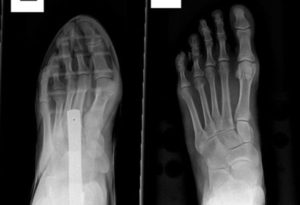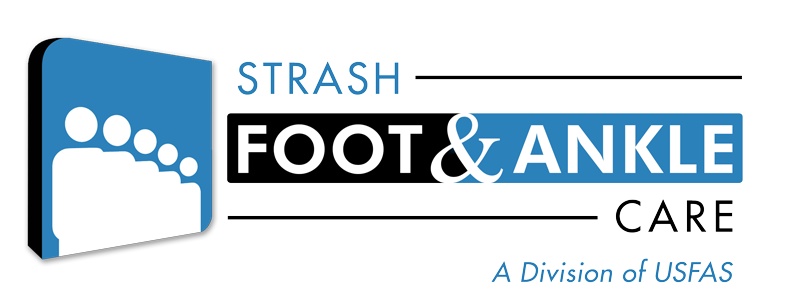19 Mar Neuromas
An intermetatarsal neuroma is any irritative process of the common digital nerve branch that supplies the plantar (bottom) of adjacent toes. It most commonly involves the nerve that supplies sensation to adjacent sides of the third and fourth toes, but can also affect other toes of the foot.
A neuroma is not cancerous and is not a true tumor but a reactive, degenerative process such as a scar. Therefore, a neuroma is benign inflammation (enlargement) of the nerve.
Neuromas occur in all adults and are most common in females. Several factors contribute to its occurrence:
- High heeled shoes
- trauma
- inflammatory conditions such as arthritis
- repetitive trauma from stresses incurred in occupational and recreational activities.
Any condition that causes constriction or irritation to the nerve can lead to the development of a neuroma.
As example, wearing shoes, especially dress shoes, causes significant squeezing of the forefoot. This, in turn, leads to compression of the nerves and eventually, a neuroma can form.

Note left X-Ray showing compression of forefoot bones
Symptoms
Aside from pain, patients may experience:
- numbness
- tingling
- burning
- tight feeling across fore-foot
- sensation of walking on a small pebble
Symptoms are aggravated by walking in shoes and relieved by removing shoes, massaging the foot, and rest. Continued pain at rest may suggest that the neuroma is worsening.
Treatment
The primary goal of podiatric treatment is to reduce or eliminate symptoms, so patients can maintain a normal lifestyle.
Treatment may be surgical or non-surgical. Non-surgical treatment consists of treatments such as, steroid injections, sclerosing alcohol injections, changing shoe gear style, physical therapy and prescription orthosis. Injection therapy with 4% alcohol sclerosing agent has proven very successful in the treatment of intermetatarsal neuromas. A study from the November/December 1999 issue of The Journal of Foot & Ankle Surgery quoted an 89% success rate with the use of 4% alcohol sclerosing solution. Similar results in our podiatric practice has decreased the number of neuroma surgeries being performed. The decision to surgically intervene is based upon the patients symptoms, the judgment of your podiatric surgeon and your preference. A neurectomy or surgical excision of a neuroma is performed when conservative treatment proves ineffective.

